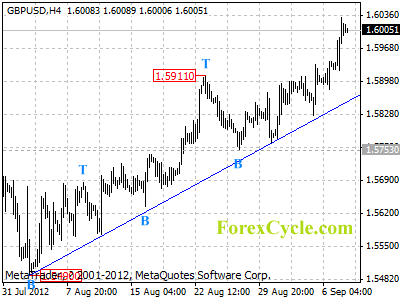By TraderVox.com

Tradervox.com (Dublin) – US Non-Farm Payrolls and ECB’s bond-buying programs were the biggest market influencers last week. With volatility back into the market, investors will be looking at the US for the QE3 program and Germany as the ruling on legality of European Sustainability Mechanism facility. Here is a brief overview of major events this week.
Tuesday 11
The US Trade Balance will be the first major report this week at 1230hrs GMT. Last month data showed that the US trade deficit declined by most in eighteen months in June, shrinking to $42.9 billion from a May figure of $48 billion. Economists are expecting this figure to rise to $44.2 billion for July when this report is released.
Wednesday 12
There will be two major reports on this day, -the UK employment data and the New Zealand Rate Decision. The previous UK employment report showed a decline in the number of people claiming unemployment, dropping by 5,900; this caused a decline in unemployment rate to 8.0 percent. The market is expecting an increase of 100 claims on this report to reach 6,000. The market is expecting the Bank of New Zealand to keep the current interest rate of 2.50 percent.
Thursday 13
There will be five major events on this day. First, at 0730hrs GMT, the SNB Rate Decision will be announced. With the euro strengthening against the franc, the central bank will have little pressure to defend its cap. The market is expecting the rates to remain between 0.0 percent and 0.25 percent. The US PPI data will be released at 1230hrs GMT where the market expects the index to climb to 1.2 percent from 0.3 increase registered in July. The US Unemployment Claims will be released at the same time where a rise to 370,000 is expected. Staying in the US, the US rate decision will be announced at 1630hrs after the FOMC meeting. While the policy makers in FOMC are expected to consider QE3, extending guidance is a more likely outcome from the Fed. The market will be evaluating Fed Chairman Ben Bernanke’s speech after the meeting.
Friday 14
US data will carry the day of Friday with the first report being the US Inflation Data released at 1230hrs together with US Retail Sales. The consumer prices were unchanged in July. The market had predicted a rise of 0.2 percent which was similar to previous four months result. This time round the market is expecting a rise of 0.5 percent while the core CPI is expected to increase by 0.2 percent. The US Retail Sales is expected to increase by 0.7 percent. Third major report on this day will be the US UoM Consumer Sentiment report which will be released at 1355hrs GMT. The report is expected to show an increase to 74.1 from 73.6 registered last month.
Disclaimer
Tradervox.com is not giving advice nor is qualified or licensed to provide financial advice. You must seek guidance from your personal advisors before acting on this information. While we try to ensure that all of the information provided on this website is kept up-to-date and accurate we accept no responsibility for any use made of the information provided. Opinions expressed at Tradervox.com are those of the individual authors and do not necessarily represent the opinion of Tradervox.com or its management.
Article provided by TraderVox.com
Tradervox.com is a Forex News Portal that provides real-time news and analysis relating to the Currency Markets.
News and analysis are produced throughout the day by our in-house staff.
Follow us on twitter: www.twitter.com/tradervox




